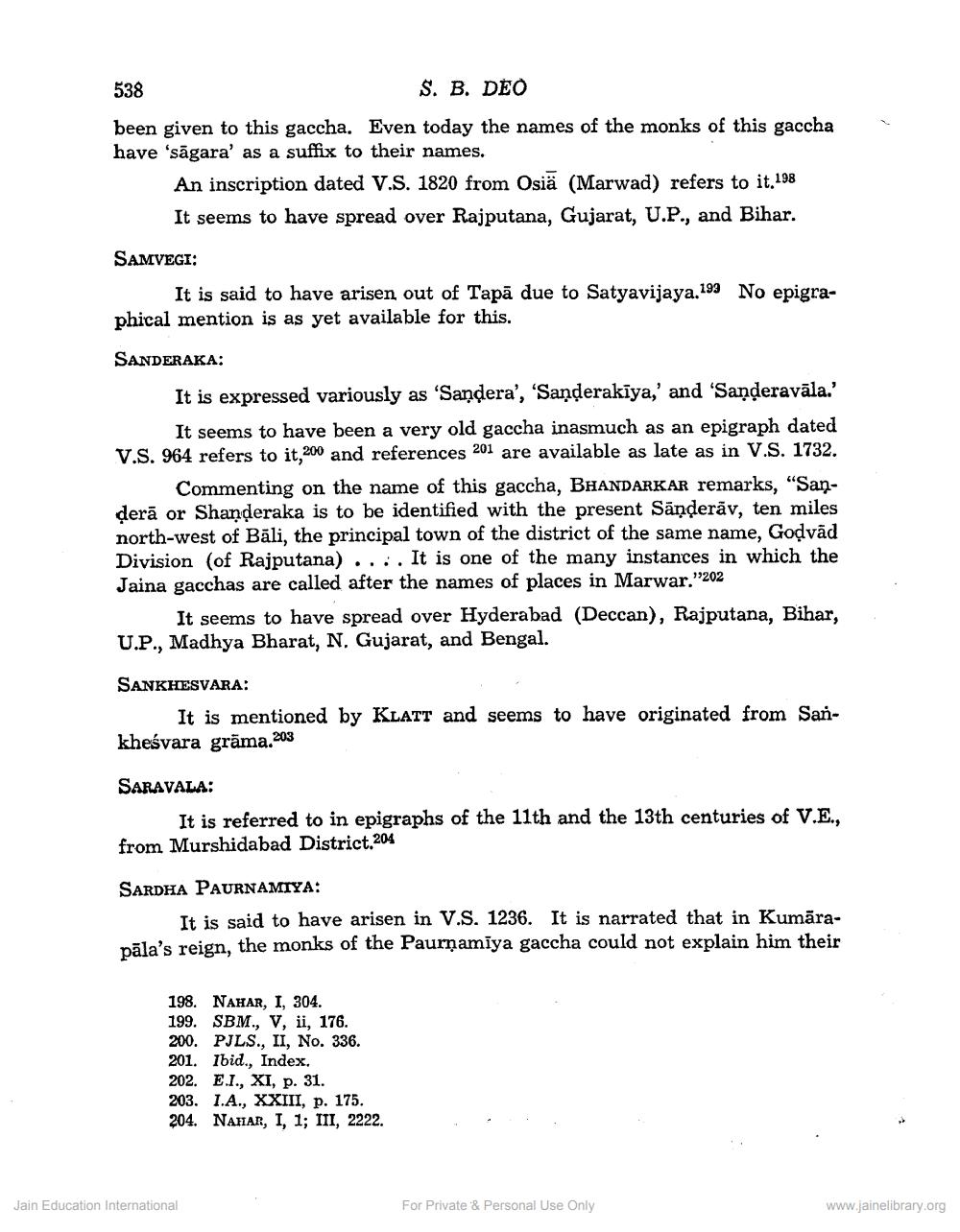________________
538
S. B. DĖO been given to this gaccha. Even today the names of the monks of this gaccha have 'sāgara' as a suffix to their names.
An inscription dated V.S. 1820 from Osiä (Marwad) refers to it.198 It seems to have spread over Rajputana, Gujarat, U.P., and Bihar.
SAMVEGI:
It is said to have arisen out of Tapā due to Satyavijaya.199 No epigraphical mention is as yet available for this.
SANDERAKA:
It is expressed variously as 'Sandera', 'Saņperakīya,' and 'Sanderavāla.'
It seems to have been a very old gaccha inasmuch as an epigraph dated V.S. 964 refers to it,200 and references 201 are available as late as in V.S. 1732.
Commenting on the name of this gaccha, BHANDARKAR remarks, "Sanderā or Shanderaka is to be identified with the present Sanderāv, ten miles north-west of Bāli, the principal town of the district of the same name, Godvád Division (of Rajputana) ... It is one of the many instances in which the Jaina gacchas are called after the names of places in Marwar."202
It seems to have spread over Hyderabad (Deccan), Rajputana, Bihar, U.P., Madhya Bharat, N, Gujarat, and Bengal.
SANKHESVARA:
It is mentioned by KLATT and seems to have originated from Sankheśvara grāma.203
SARAVALA:
It is referred to in epigraphs of the 11th and the 13th centuries of V.E., from Murshidabad District.204
SARDHA PAURNAMIYA:
It is said to have arisen in V.S. 1236. It is narrated that in Kumārapāla's reign, the monks of the Paurņamiya gaccha could not explain him their
198. NAHAR, I, 304. 199. SBM., V, ii, 176. 200. PJLS., II, No. 336. 201. Ibid., Index. 202. E.I., XI, p. 31. 203. I.A., XXIII, p. 175. 204. NAHAR, I, 1; III, 2222.
Jain Education International
For Private & Personal Use Only
www.jainelibrary.org




